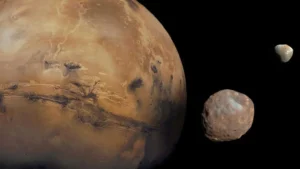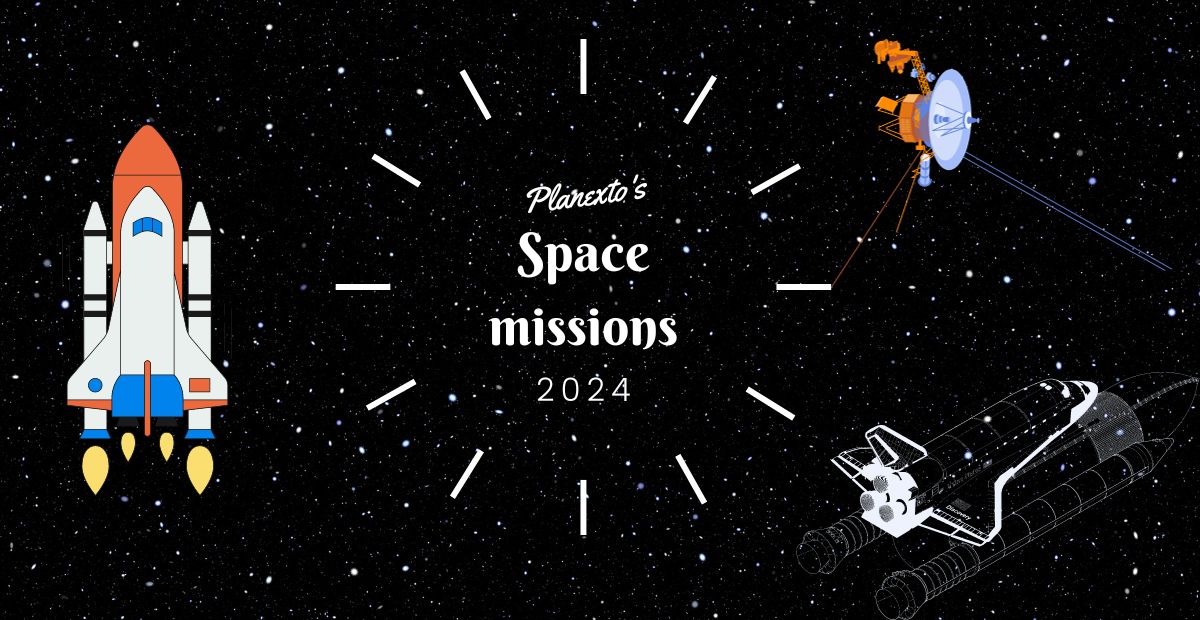Introduction
Space missions are planned journey into space for scientific, exploratory, or technological purposes. Conducted by space agencies or private entities. Get ready to embark on an exciting cosmic journey in 2024. The celestial stage is all set for a stellar show, building on the momentum of this year’s space triumphs. From the daring escapades of NASA’s OSIRIS-REX mission to the lunar exploration feats of India’s Chandrayaan-3, the cosmic adventure continues to captivate our imaginations. So, buckle up and let the space excitement unfold!
Europa Clipper: Unveiling Jupiter’s Enigmatic Moon
Get ready for a rendezvous with Europa, one of Jupiter’s celestial gems. NASA’s Europa Clipper, slated for liftoff on October 10, 2024, promises to unlock the secrets of this icy moon. Picture this: a spacecraft, adorned with two solar panels, gracefully gliding past Europa, a moon that boasts an icy surface concealing a potential saltwater ocean—twice the volume of Earth’s combined oceans. The mission aims to probe Europa’s mysteries through 50 close encounters, studying its icy shell, surface geology, and the elusive subsurface ocean. Brace yourselves; this mission is a game-changer in our quest to fathom extraterrestrial life.
Artemis II: A Lunar Odyssey Beyond Boundaries
Named after Apollo’s mythological twin, NASA’s Artemis program is gearing up for a historic return to the moon. Artemis II, the second act in this lunar drama, is scheduled to launch in November 2024, with four intrepid astronauts onboard. Building on the success of Artemis I, which orbited the moon in 2022, Artemis II is the precursor to prolonged human habitation in space and ambitious missions to Mars. Will we witness the launch as early as November 2024, or will the anticipation stretch into 2025? The countdown begins.

VIPER: Hunting for Lunar Water Treasures
Meet VIPER, the Volatiles Investigating Polar Exploration Rover, a lunar explorer the size of a golf cart. Tasked with scouring the moon’s south pole for water and other volatiles, VIPER’s journey, initially slated for 2023, faces a slight delay. NASA, ensuring thorough testing of the lander system, is now set to deploy VIPER in November 2024. Navigating extremes, from scorching lunar daylight to the frigid shadows, VIPER’s 100-day mission could unveil vital resources for future lunar expeditions. Get ready for a lunar quest like never before!
Lunar Trailblazer and PRIME-1: Riding the Rideshare Wave
In the world of planetary exploration, Lunar Trailblazer, a water-seeking satellite, will orbit the moon, mapping water molecules globally. Set for an early 2024 readiness, its launch hinges on the primary payload’s timing. Enter PRIME-1, a lunar drill test scheduled for mid-2024, riding shotgun with Lunar Trailblazer. The success of earlier launches dictates their fate, providing a thrilling subplot to our lunar exploration saga.
JAXA’s Martian Moon exploration: A Japanese Rendezvous with Phobos and Deimos
As Earth’s moon attracts myriad visitors in 2024, Mars’ moons—Phobos and Deimos—await their turn. JAXA’s Martian Moon exploration mission, set for liftoff in September 2024, aims to unravel the origin of these Martian companions. Are they captured asteroids or remnants of Mars’ orbital debris? The spacecraft, spending three years around Mars, will closely observe Phobos and Deimos, even landing on Phobos to collect a precious sample for Earth’s eager scientists.

ESA’s Hera Space Missions: Redefining Planetary Defense
Hera, a European Space Agency mission, revisits the Didymos-Dimorphos asteroid system, the stage for NASA’s DART mission in 2022. DART, a pioneer in kinetic impact techniques, altered Dimorphos’ orbit through a deliberate collision. Scheduled for October 2024, Hera aims to scrutinize the physical properties of these asteroids, offering insights into planetary defense strategies. Imagine a future where humanity redirects potential threats away from Earth—Hera could hold the key.
Conclusion
Get ready for an amazing cosmic show in 2024! These space missions are gearing up to take us on a thrilling journey, pushing the limits of what we know and satisfying our curiosity about the vast universe. So, buckle up and get ready for a year filled with astronomical wonders and groundbreaking discoveries! It’s going to be an exciting ride!
FAQs
Q: Is there life beyond Earth?
A: Space missions, particularly those exploring Mars and icy moons, aim to answer this age-old question by seeking signs of extraterrestrial life or conditions suitable for it.
Q: How do space missions benefit humanity?
A: Embarking on space missions yields technological advancements, fosters international collaboration, and enhances our understanding of the universe, contributing to scientific and societal progress.
Q: How are astronauts selected for space missions?
A: Astronaut selection involves rigorous physical and mental assessments, educational qualifications, and specialized training to ensure individuals are equipped to handle the challenges of space.
Q: What role do robotics play in space exploration?
A: Robotic missions serve as pioneers, navigating harsh environments and conducting experiments, providing crucial data that informs subsequent human or robotic endeavors.
Q: How do space missions contribute to Earth’s sustainability?
A: Space missions contribute to Earth’s sustainability by monitoring climate change, managing resources, and developing technologies with applications on our home planet.








